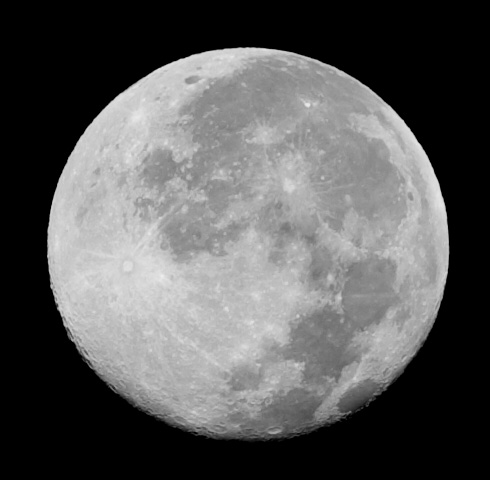Where is infinity focus?
Please see yesterday’s entry on moonlight photography below.
Accurate infinity focus can be a challenge. The 280mm moon shot required the use of Live View and minute focus changes to “nail” the focus. A reader wrote to ask:
“To photograph the moon is not a matter to focus at infinity? Is there another option?”
The infinity mark is not. With many lenses today, especially APO ones or super-teles, there is no hard infinity stop. The Leica 280/4 has a range of “infinity” to account for temperature changes that affect the optics; you’ll see the same ambiguity on super telephoto lenses from Nikon or Canon. Many zooms that are well corrected for color aberrations have no infinity stop, consider the Nikon 14-24 as one example. There are many others. This makes night-time photography a challenge, because precision focus is mandatory, yet the light is dim. The moon is relatively easy because it’s bright, but with a 280mm lens, a tiny change in focus causes blur.
While an autofocus lens might be able to focus accurately on the moon, there’s no guarantee it will do so perfectly. And of course focusing with greatest accuracy demands use of the central focusing sensor, so you’ll have to focus, disable AF, then recompose. Focus, confirm with Live View, then disable AF so you can shoot more than one frame without having to focus again.
Lenses with mechanical infinity stops aren’t guaranteed to be perfect, how could they be? Nothing mechanical is ever made exactly the same for every copy! With film, this slop fell into the film thickness range; with digital a 5-10 micron error means a very noticeable reduction in contrast, followed by blur. That said, I’ve had extremely consistent results with Zeiss ZF lenses in terms of infinity, though I have seen some subtle variations. Actually, the lens mount itself really is inadequate for the precision required with today’s DSLRs, this can be seen by applying slight pressure on the lens side-to-side and observing gapping between the lens and mount.
Lens adapters introduce another variable: cheap ones especially might be off significantly so that infinity focus falls a little off of where it should be. Even a quality lens adapter has this issue, though my luck has generally been good shooting Zeiss ZF on Canon EOS using CameraQuest lens adapters.
Finally, each camera body varies slightly in its lens mount to sensor distance, so a “perfect” lens might be slightly blurred on some cameras! And of course, lens mount to sensor alignment can be skewed, as it was with my D3x!
If you want a sharp picture at “infinity”, do not assume it’s a simple matter to focus! Verify each lens with your camera body using Live View to check its mechanical infinity setting (if it has one).


























